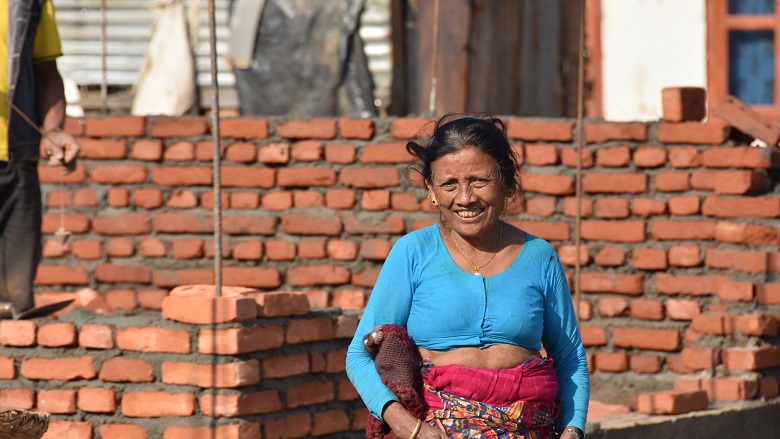Bimala Tamang, a 40-year-old mother raising three children in Nepal’s Sindhupalchowk district, spent most of her time looking after household chores.
Then on April 25, 2015, a 7.8-magnitude earthquake hit Nepal, killing nearly 9,000 people and injuring another 22,000. More than 460 aftershocks further added to the destruction. But the people of Nepal rebuilt their communities – and their lives – even stronger than before earthquake.
In the weeks following the earthquake, the World Bank worked with the Government of Nepal to conduct a Post Disaster Needs Assessment (PDNA). The framework underscored the enormous need and challenge in ensuring safer housing reconstruction for around 715,000 houses that were destroyed or severely damaged with over $3.5 billion estimated for housing reconstruction.
A subsequent $200 million project further supplemented by two rounds of additional financing totaling $500 million funded by IDA – the World Bank’s fund for the poorest countries – supported the Government of Nepal in giving housing grants to 237,680 beneficiaries and included technical assistance to house owners and a regime of quality inspections to ensure the safety of reconstructed houses. More than 9,000 masons and engineers were trained on safer reconstruction practices.
But the benefits of the project went beyond safer, sustainable reconstruction. Rebuilding after the earthquake gave women across Nepal a chance to break out of social constraints and assert financial independence. Of more than 830,000 eligible beneficiaries in the 32 most-affected districts, 26 percent of households are expected to be headed by women. The project also facilitated opening of bank accounts for around 780,000 beneficiaries; 30 percent of them were women.
Bimala and her family received a NPR 300,000 grant in installments, which she called “a life-changing experience.”
“It enhanced my mobility, self-confidence, and awareness by having to interact with government functionaries and project staff,” Bimala said. “I feel more informed as I attend meetings and trainings, and I’m an active member of the community women’s group.”
Bimala and her husband rebuilt their house, which they now jointly own – one story among the thousands of women who broke away from social constraints and rebuilt their lives stronger out of the rubble.

